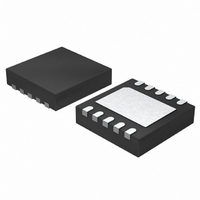LT1995CDD#PBF Linear Technology, LT1995CDD#PBF Datasheet - Page 17

LT1995CDD#PBF
Manufacturer Part Number
LT1995CDD#PBF
Description
IC AMP GAIN SELECT 10-DFN
Manufacturer
Linear Technology
Datasheet
1.LT1995CMSPBF.pdf
(20 pages)
Specifications of LT1995CDD#PBF
Amplifier Type
Programmable Gain
Number Of Circuits
1
Slew Rate
1000 V/µs
-3db Bandwidth
32MHz
Voltage - Input Offset
750µV
Current - Supply
7.1mA
Current - Output / Channel
120mA
Voltage - Supply, Single/dual (±)
5 V ~ 30 V, ±2.5 V ~ 15 V
Operating Temperature
0°C ~ 70°C
Mounting Type
Surface Mount
Package / Case
10-WFDFN Exposed Pad
Lead Free Status / RoHS Status
Lead free / RoHS Compliant
Output Type
-
Gain Bandwidth Product
-
Current - Input Bias
-
Available stocks
Company
Part Number
Manufacturer
Quantity
Price
APPLICATIO S I FOR ATIO
If one of the A parameter configurations in Figure 3 is
preferred, or the use of an external biasing source is
desired, the P and REF input connections shown grounded
in a Figure 3 circuit may be instead driven by a V
voltage to establish a quiescent operating point for the
input and output pins. The V
circuit are then driven via a coupling capacitor. Any
grounded M inputs for the desired G configuration (refer
to Figure 2) must be individually or collectively
AC-coupled to ground. Figure 8 illustrates a complete
example circuit of an externally biased AC-coupled nonin-
verting amplifier. The V
low (a few ohms) to avoid degrading the inherent accuracy
of the LT1995. 0.013% of additional Gain Error for each
ohm of resistance on the REF pin is typical.
Resistor Considerations
The resistors in the LT1995 are very well matched, low
temperature coefficient thin film based elements. Although
their absolute tolerance is fairly wide (typically ±5% but
±25% worst case), the resistor matching is to within 0.2%
V
IN
V
Figure 8. AC-Coupled Noninverting Amplifier
with External Bias Source (Example)
BIAS
C
C
BYP
IN
10
8
9
1
2
3
U
M4
M2
M1
P1
P2
P4
LT1995
BIAS
U
4
1995 F08
+V
7
IN
source impedance should be
REF
connections of the Figure 3
5
CONFIGURATION EXAMPLE:
A = 0.625
G = 6.00
(V
OUT
W
6
/V
IN
C
OUT
= 3.75V)
V
OUT
U
BIAS
at room temperature, and to within 0.3% over tempera-
ture. The temperature coefficient of the resistors is typi-
cally –30ppm/°C. The resistors have been sized to accom-
modate 15V across each resistor, or in terms of power,
225mW in the 1k resistors, 113mW in the 2k resistors, and
56mW in the 4k resistors.
Power Supply Considerations
As with any high speed amplifier, the LT1995 printed
circuit layout should utilize good power supply decoupling
practices. Good decoupling will typically consist of one or
more capacitors employing the shortest practical inter-
connection traces and direct vias to a ground plane. This
practice minimizes inductance at the supply pins so the
impedance is low at the operating frequencies of the part,
thereby suppressing feedback or crosstalk artifacts that
might otherwise lead to extended settling times, fre-
quency response anomalies, or even oscillation. For high
speed parts like the LT1995, 10nF ceramics are suitable
close-in bypass capacitors, and if high currents are being
delivered to a load, additional 4.7µF capacitors in parallel
can help minimize induced power supply transients.
Because unused input pins are connected via resistors to
the input of the op amp, excessive capacitances on these
pins will degrade the rise time, slew rate, and step re-
sponse of the output. Therefore, these pins should not be
connected to large traces which would add capacitance
when not in use.
Since the LT1995 has a wide operating supply voltage
range, it is possible to place the part in situations of
relatively high power dissipation that may cause excessive
die temperatures to develop. Maximum junction tempera-
ture (T
J
) is calculated from the ambient temperature (T
LT1995
17
1995fb
A
)













